Exhibition | Patterns of Inquiry
June 18-July 12, 2020
Repeating forms, woven patterns, rhythmic movement, and decorative aspects integrate into fine art to create a certain mood, mindset and vision. Pattern can be busy, energetic and exciting, or repetitive, soothing and balancing. Pattern can enhance a subject or become content in itself. Art with a strong influence of pattern often depicts shallow spaces, but can lead to a deeper meaning. As pattern takes over, the visual idea becomes paramount, inviting the viewer to revel in its form.
Pattern as order
an arrangement or sequence of simplified forms repeated
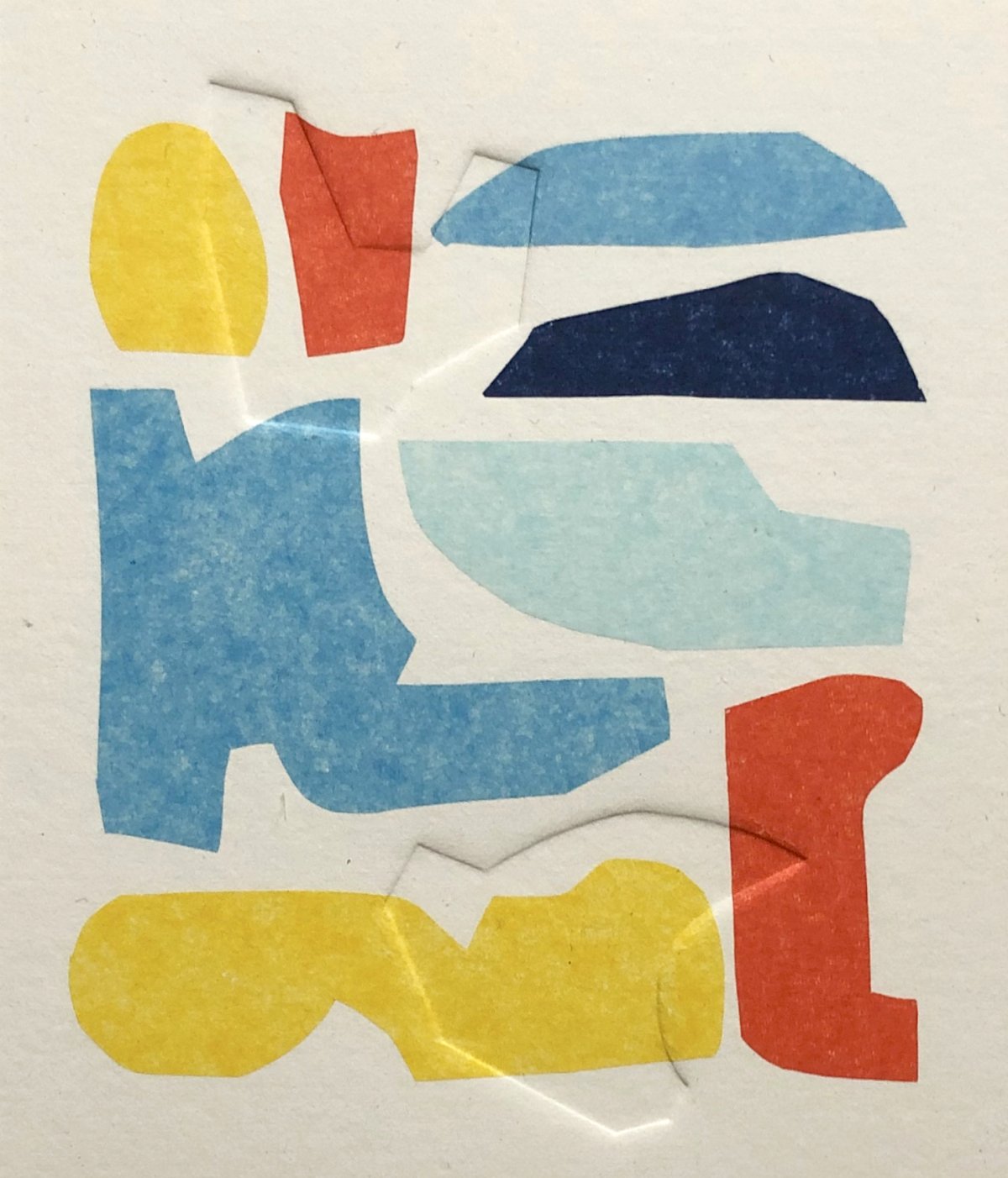
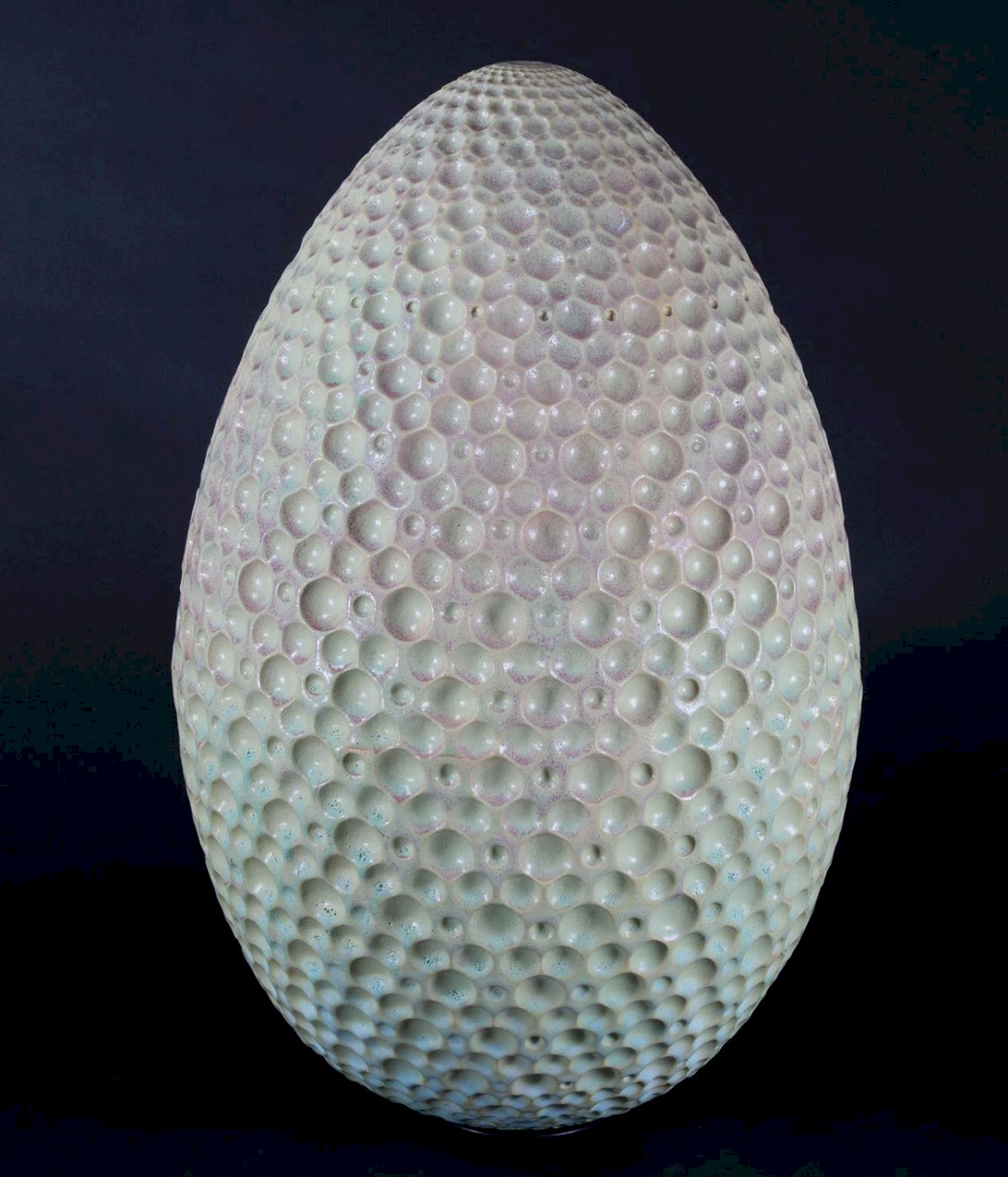
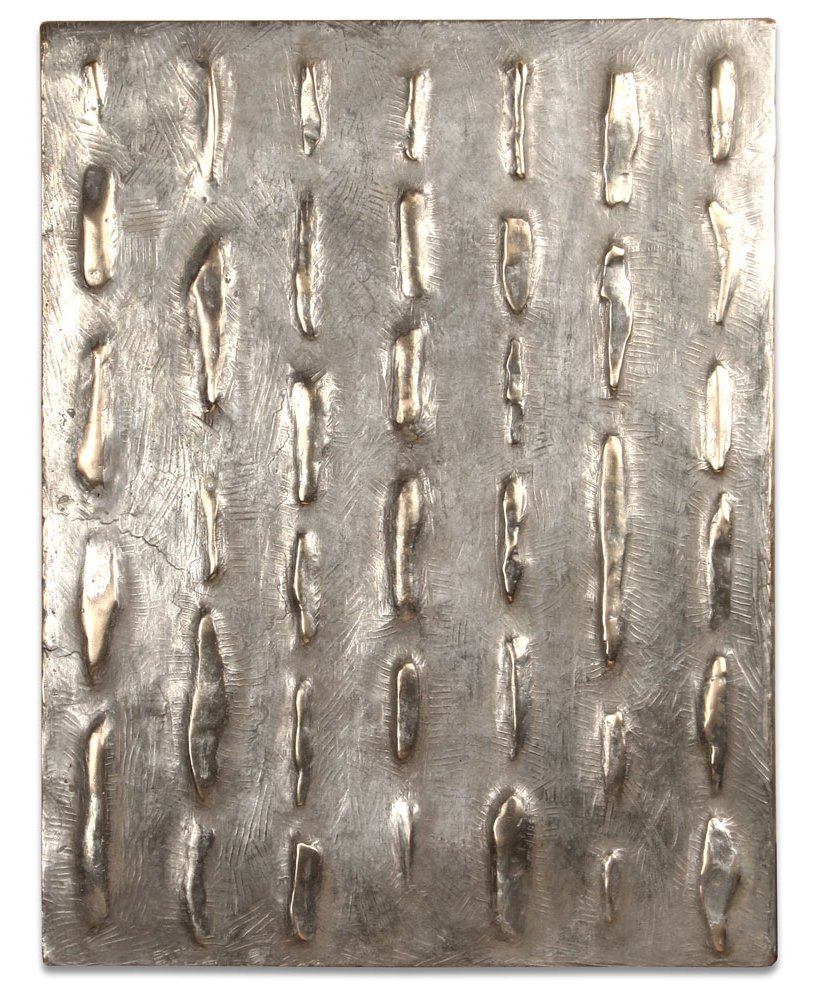
Ileana Appleton Foster uses a combination of embossing and pressed colored paper to create field formations. Her visual ideas are inspired by man-made field and farming areas and natural islands and archipelagos. By simplifying land forms into lines, shapes, and shallow relief, her patterns elicit a calm in their erasure of chaos. The color used is an expression of her response to the subjects. There is simple balance and joy in her work.
Simon van der Ven's art sparks elemental recognition by reflecting repeated patterns and tactile forms found in nature. The pattern is meditative, slowing us as it shrinks and grows with the expanding and contracting shape of the egg.
JT Gibson's Tidal Suite was initially inspired by an electron microscope image of zircon crystals embedded in rocks. Gibson developed the idea through an interest in the hierarchy of repeated forms in the natural world. His bronze grid of river rocks suggests anything from microscopic to massive. They could be building blocks of nature at any scale.
Pattern as chaos
dizzying and random, dissonant and disorienting

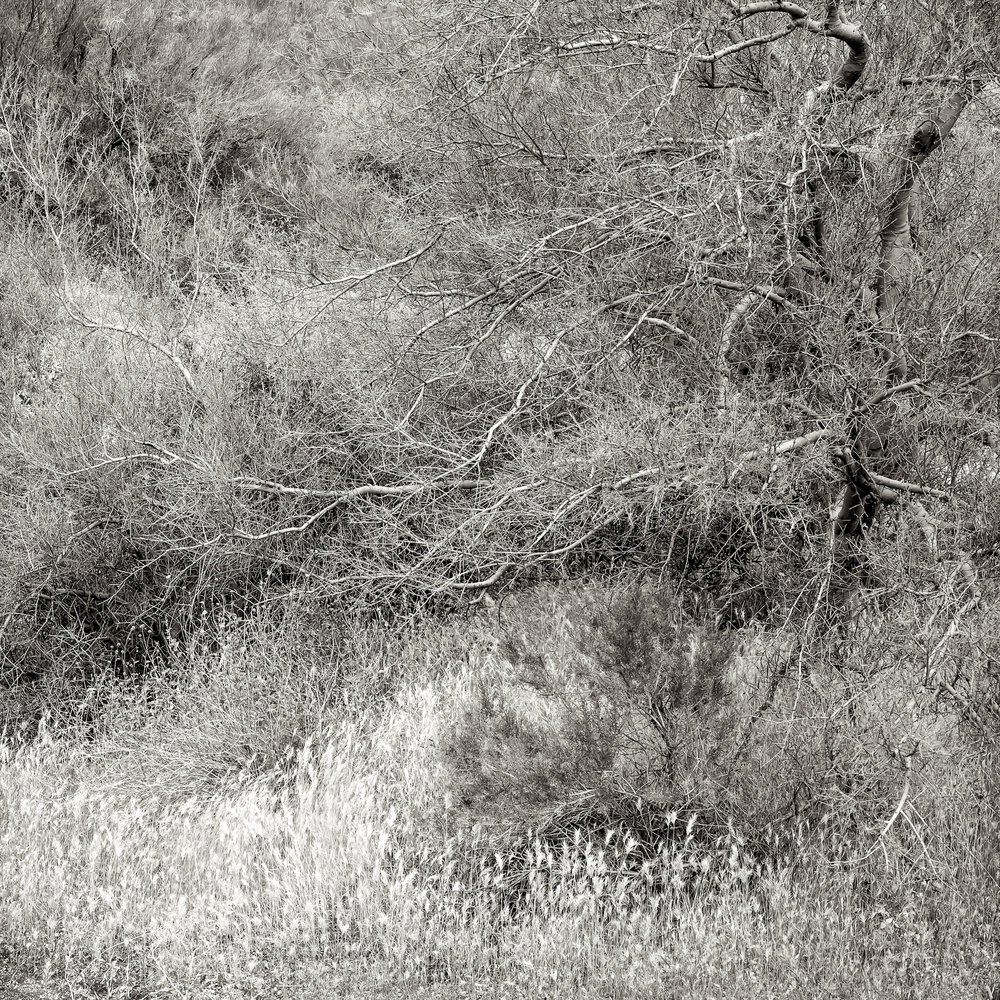
Breehan James says her paintings are "meant to evoke a psychological state of being both lost and found in nature." In a thicket of green and blue we can find peace, distraction, or get lost in the visual stimulation.
Jon Tobiasz uses pattern to show the dynamic and transient quality of the natural landscape. The swirling grasses and extended labyrinth of branches criss-crossing the scene shows nature as interconnected and in perpetual transformation and flux.
Pattern as archetype or form
a known symbol referenced to convey a message
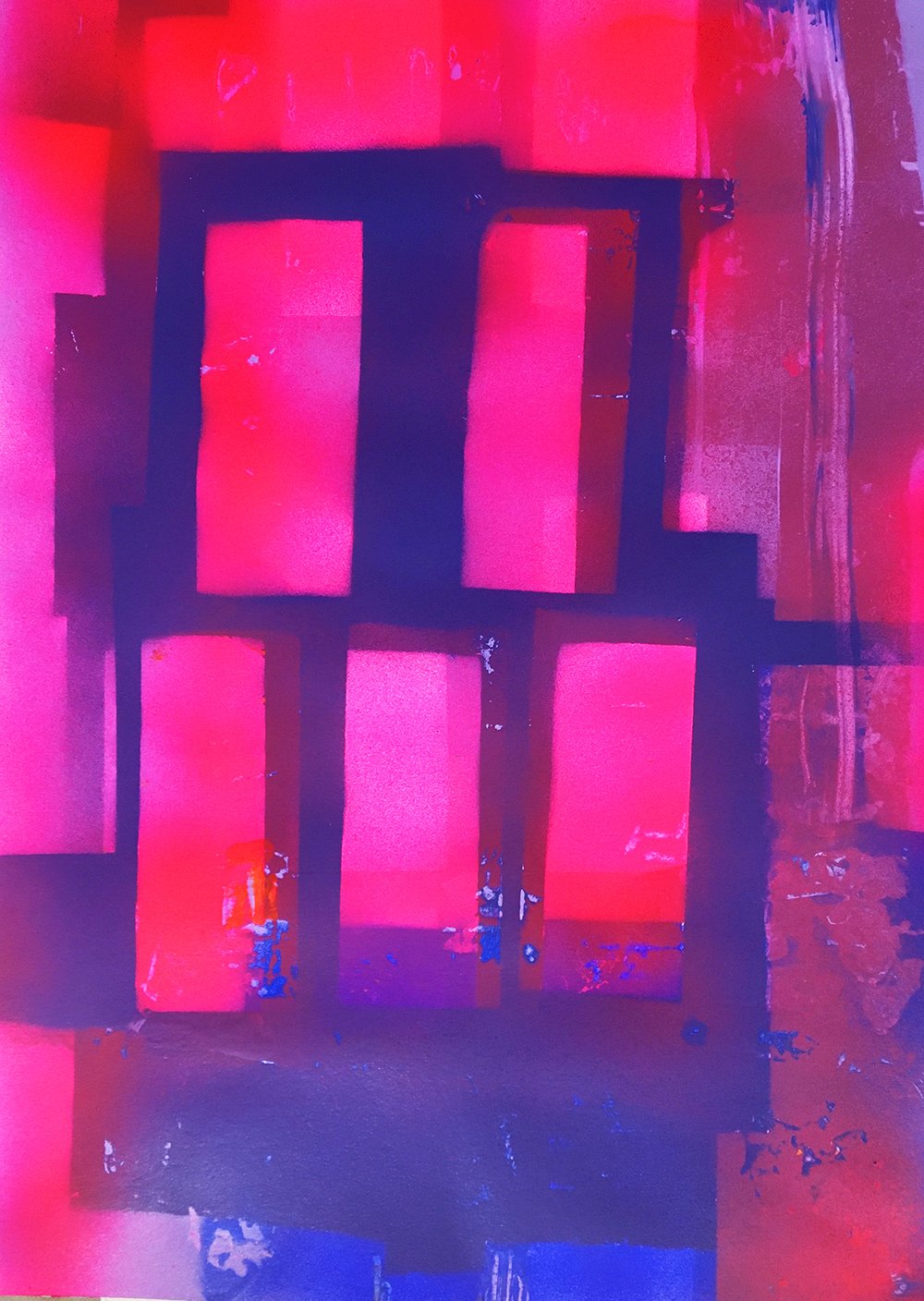
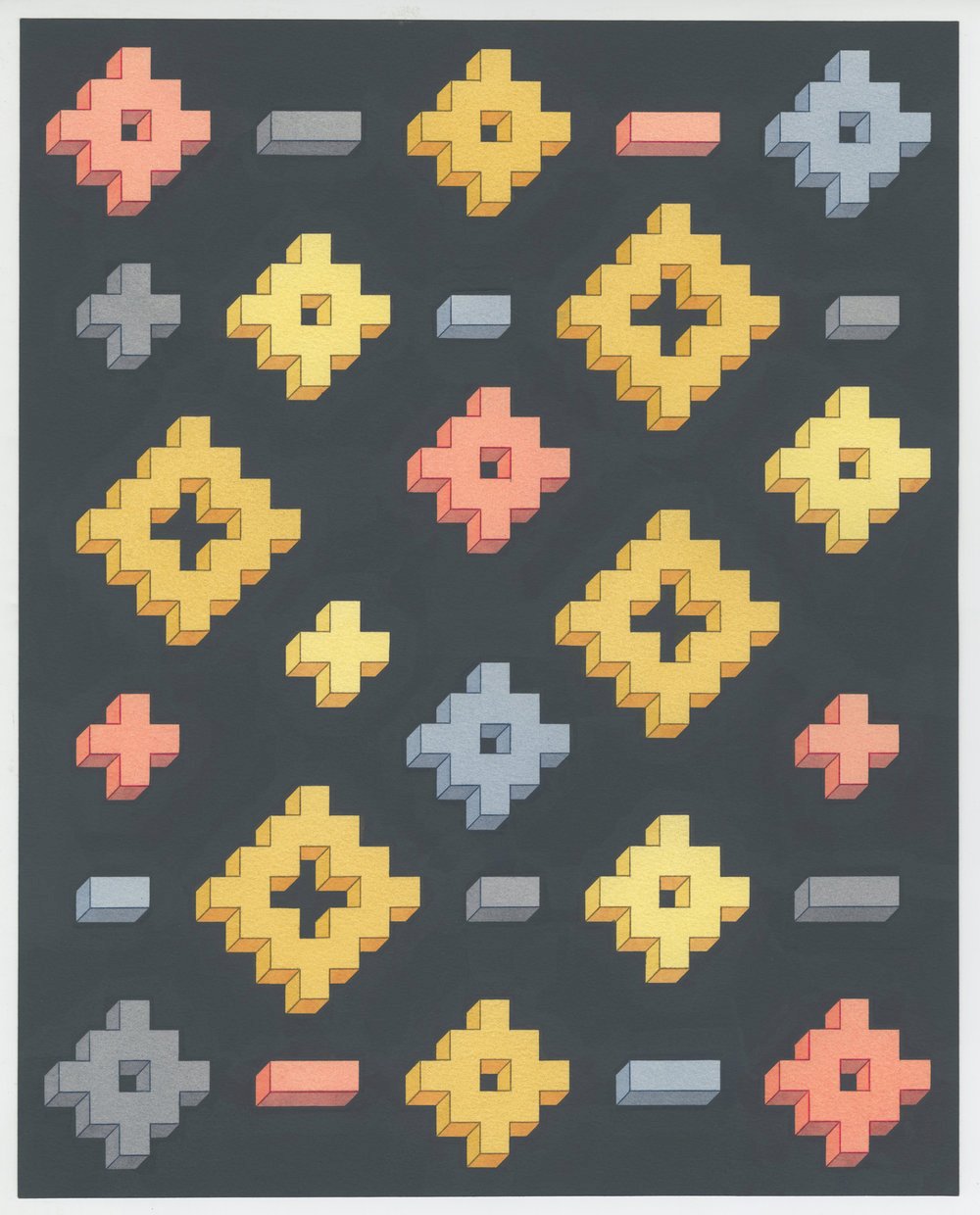
Deborah Zlotsky uses dollar bills as a physical stencil and symbol in her work as a way to defuse, transform, and poke fun at the historical link between Jews, money, and power. The delineated stencils and the diffused spray paint juxtapose what is very solid and sure with what is uncertain. Zlotsky says, "the stories I tell emerge from a painting's history of accumulated actions, spatial continuities and disruptions, and evidence of accidents, change, and repair. I am especially interested in the way the past permeates the present."
Melissa Thorne uses patterns from Shaker chair weavings as a form for her paintings, which combine the Shaker belief in the ecstatic experience of art making and the austere simplicity of their designs. By making the patterns dimensional and the color palette metallic, she activates fantasy within a familiar framework.
Pattern as decadent and playful
decorative, ornate, opulent, extravagant, energetic
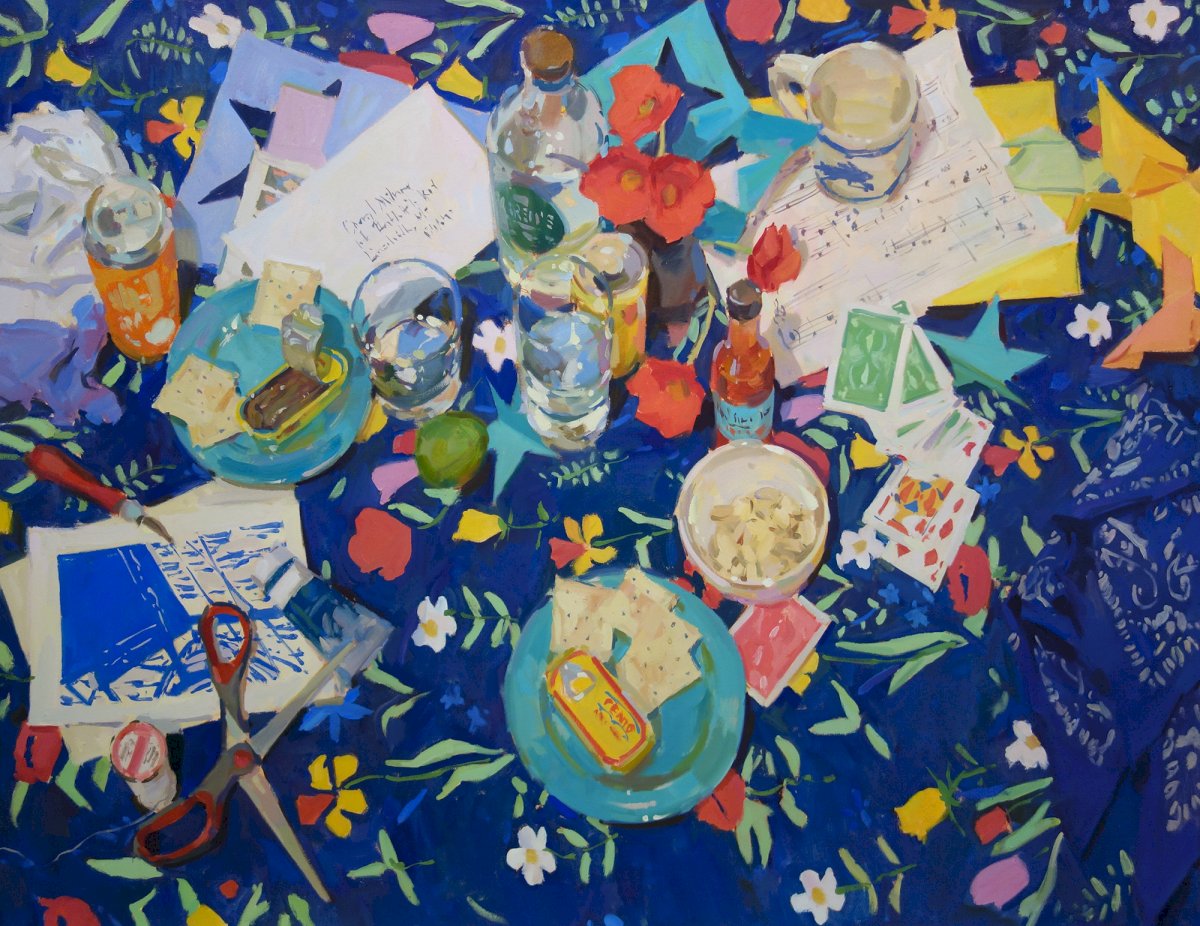
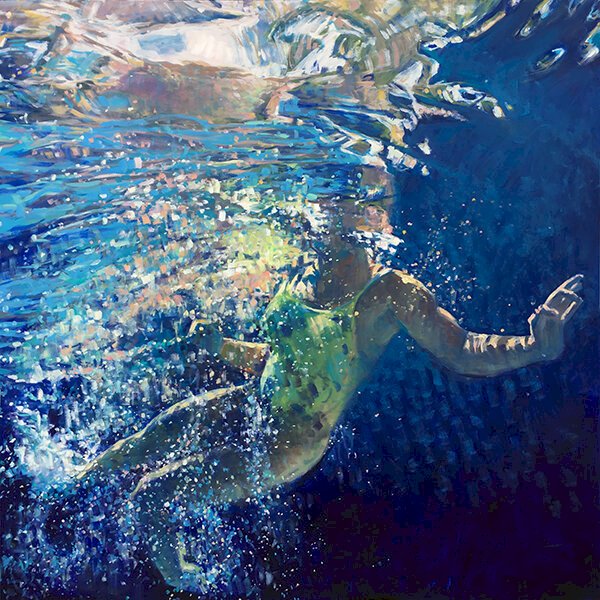
Colin Page's tablescape of time spent in quarantine is a swirl of flowers and color. The scene warps the aerial perspective to fill the space and put us just off balance. The subject, evidence of unlimited leisure time spent crafting, playing, drinking, and eating, works with the ornate patterning to suggest jubilant excess. Colin captures the strange but wonderful highlights during our dark time of quarantine.
Jessica Lee Ives's effervescent arrangement of bubbles rolls around the figure and enlivens the scene. She uses pattern to connect the human form to its natural surroundings, showing the push and pull the figure and water exert on one another.
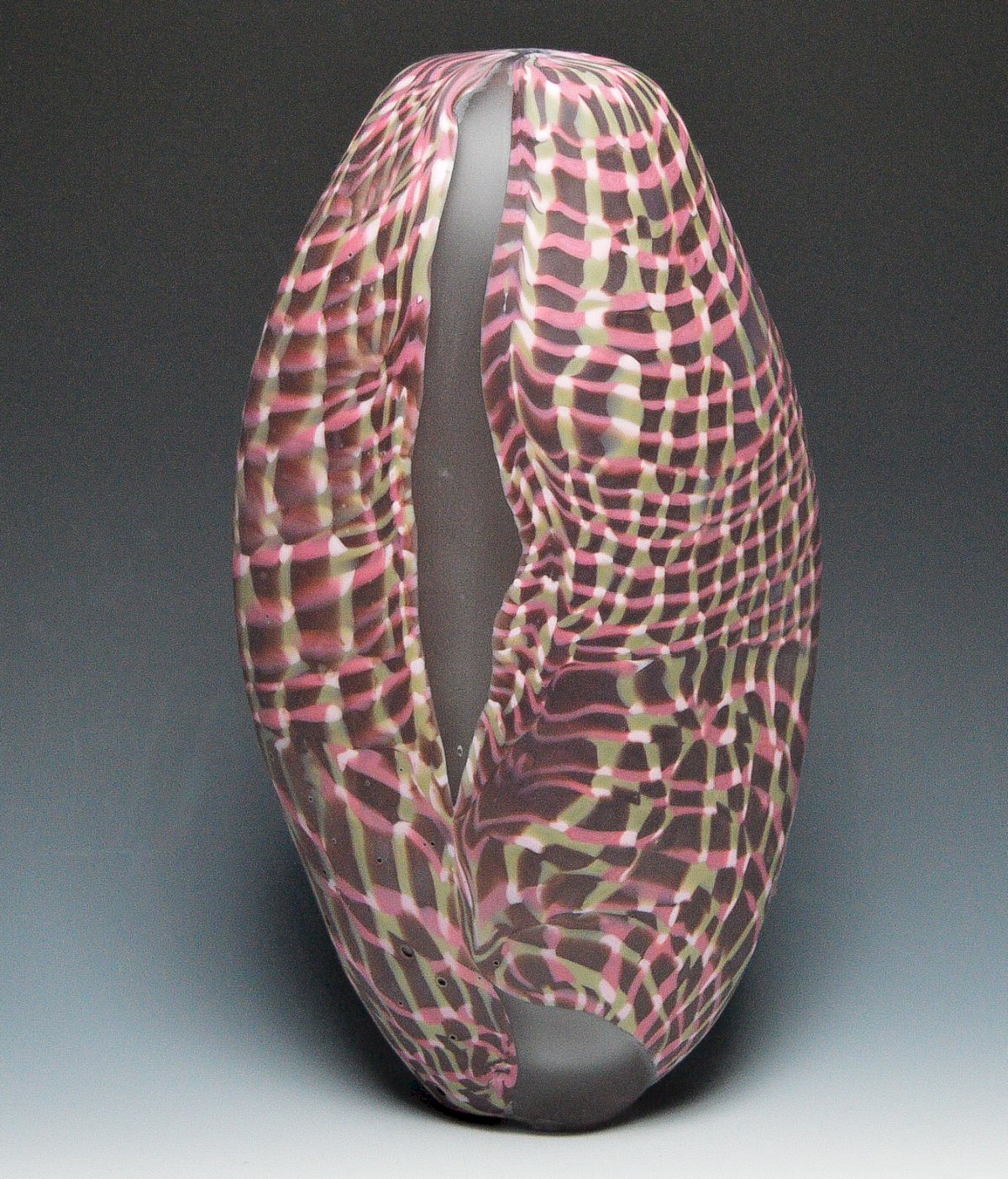

David Jacobson uses the tradition of Murrini glass to manipulate a pattern across a form. The glass pattern is made of colored glass canes, combined and cut into thin cross sections. The pattern is stretched across the final glass form as it is blown, pulling the colors across the molten sculpture. This technique allows for a multitude of colorshifts and a complexity of pattern, making it one of the most decorative styles of glass blowing.
Ben Breda's knives are all hand made, from the forging of the blade to the crafting of the handles and spacers. In this knife, Breda folds and hammers 176 layers of steel to create a Damascus pattern blade, legendary for its strength and resiliency. In the process, Damascus forms an ornate flowing pattern of teardrops, swirls, and ladders. Ben Breda's careful precision shows a well crafted blade that accentuates the organic qualities of his materials.